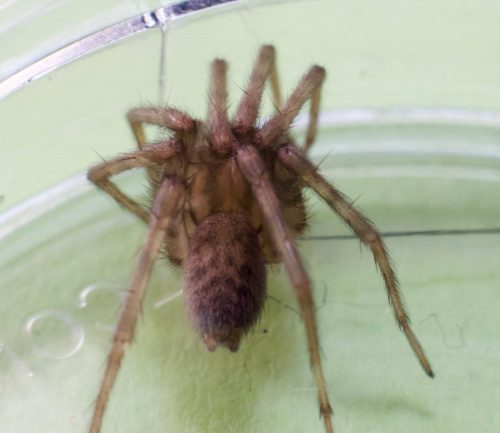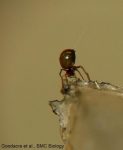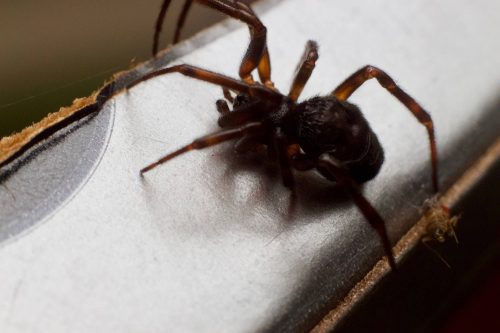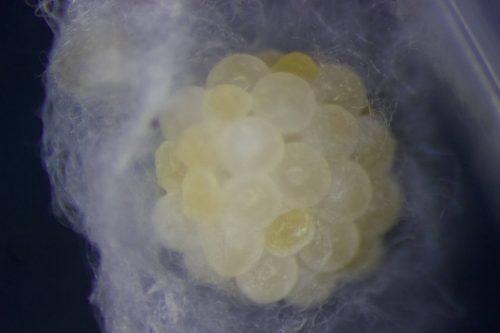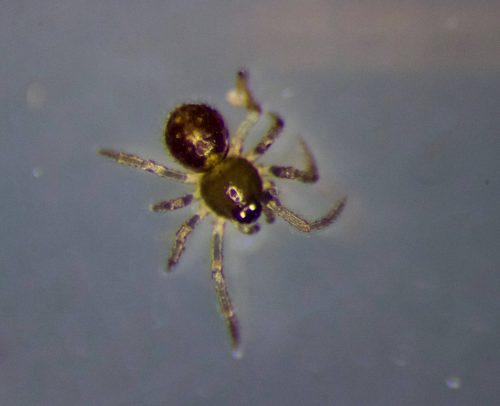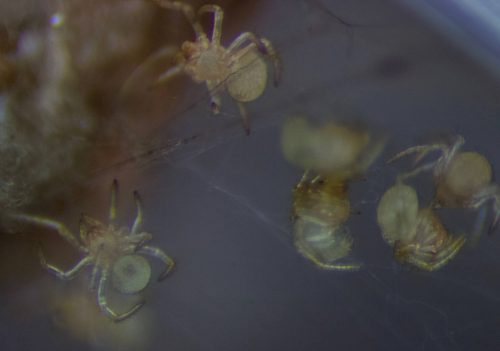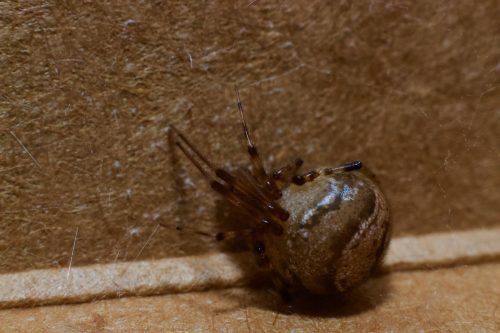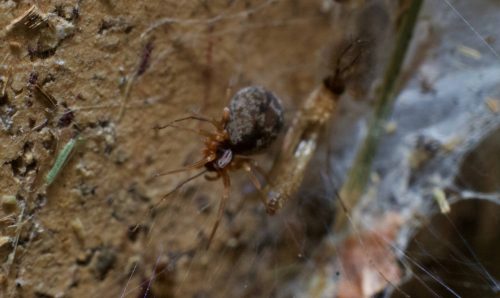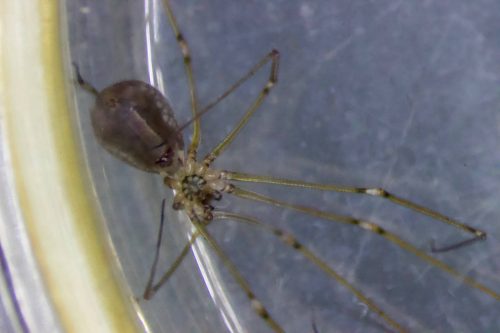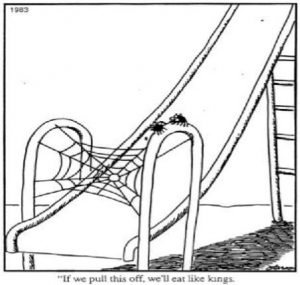Look, spiders, you should know better than to scurry across the floor of someone who has a bag of petri dishes and brushes and vials and who is currently known to scrutinize every corner and surface for spiders. It’s like you’re just asking to be captured.
Fortunately for her, I only hunt with a camera and she is about to be released into my garage.

